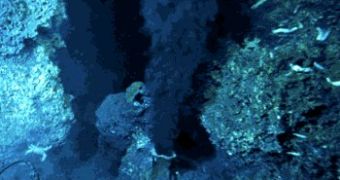The waters of the Southern Ocean are cold, remote and difficult to study, posing many questions, still unanswered.
A team led by Alberto Naveira Garabato of the National Oceanography Centre, Southampton has solved one issue: the researchers studied the ocean circulation in the current that flows around Antarctica by tracking down the path of helium emitted by underwater volcanoes.
They have also found a 'short-circuit' in this circulation, important in forecasting future climate change.
This allows for the Southern Ocean cold waters sinking to the abyss to rise much more quickly than previously believed.
The Southern Ocean circulation connects all the other oceans and has a great importance in the interaction of the carbon dioxide with the sea: its movement between deep and surface waters in the Southern Ocean is extremely important for global warming.
The oceanic circulation is vital for transporting heat, carbon and nutrients around the globe, regulating the planet's climate. The researchers discovered that much of the vertical mixing around Antarctica occurs around the tip of South America and in the south Atlantic waters off the Falklands (the Scotia Sea).
"The Southern Ocean is the least well understood part of the world ocean, but one of the most important parts. We are going to have to understand its circulation before we can make really confident predictions about how the climate is going to change over the next 100 years. This is a piece of knowledge that will help us do that. This tells us how an important part of it works." said co-author Prof Andrew Watson, from the University of East Anglia's School of Environmental Sciences.
A combination of rapid mixing and rapid movement along density surfaces determines a "short-circuit" in this area, concentrating here the vertical circulation.
The team monitored the movement of helium released by the deep vents (submarine volcanoes) in the Pacific. This gas dissolves in the deep sea and a part of the helium rich waters goes down the coast of Chile. Through the depths of the Cape Horn (in the southern tip of South America, separating southern Pacific from southern Atlantic) these waters pour into the Antarctic current. In the Atlantic, the helium rich waters spread, shift and diffuse by circulation. Helium measurements were used to detect the "short-circuit".

 14 DAY TRIAL //
14 DAY TRIAL //